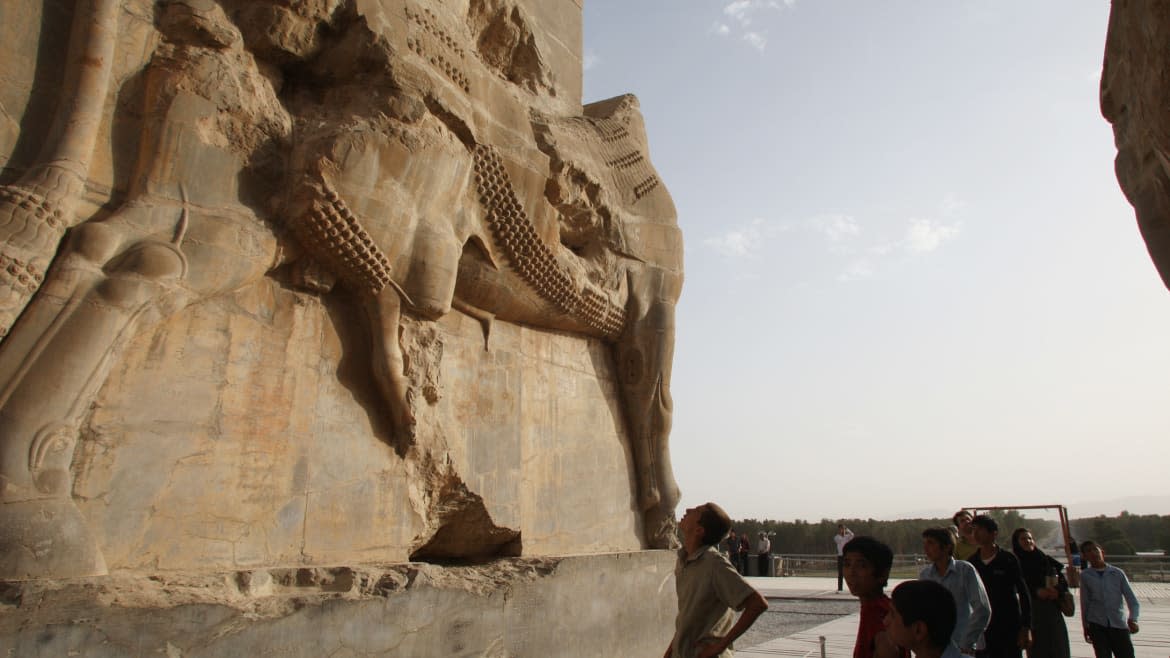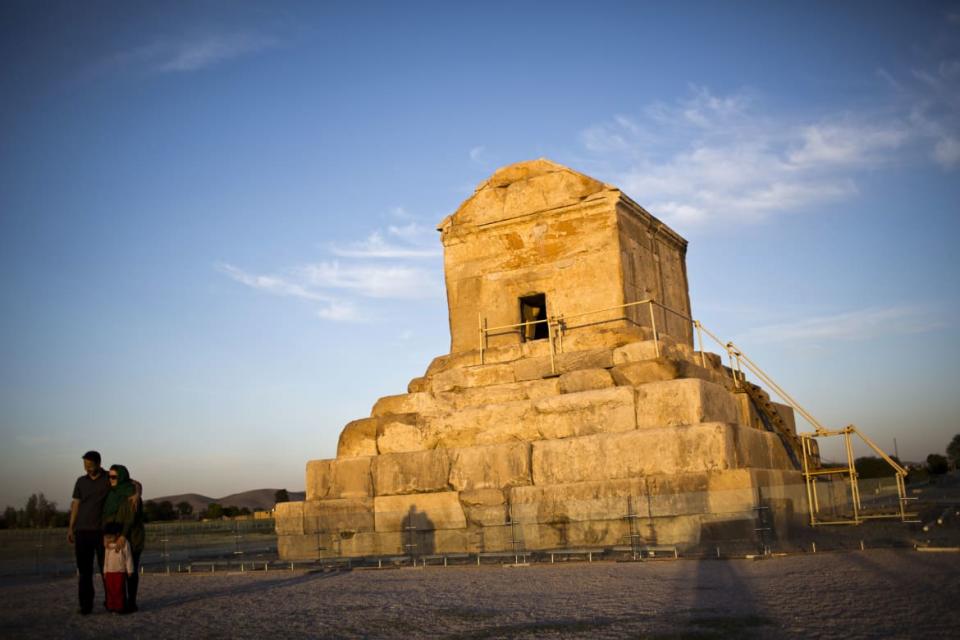Biblical Sites, Ancient Wonders, the Last ‘Garden of Eden’: Here’s What Trump Just Threatened to Bomb in Iran

Late last week, using what has apparently become an official channel of communication, President Donald Trump announced via his Twitter account that the U.S. military would target “52 Iranian sites… some at a very high level & important to Iran & the Iranian culture” if Iran retaliated for the killing of its top military man and spy, Major Gen. Qassem Soleimani. The selection of 52 sites would symbolize, he said, the “52 American hostages taken by Iran many years ago,” referring to the 1979 Tehran embassy siege.
Deliberately destroying sites of cultural heritage is, according to Irina Bokova, a former director general of UNESCO, “a war crime” and “a strategy of cultural cleansing.” It was a strategy employed to great effect by ISIS. Apart from the fact that the president is threatening to use terrorist tactics to punish an entire people, it is worth looking at the significance of the heritage he is planning to eradicate.
Currently, there are 22 cultural UNESCO World Heritage Sites in Iran. Among them is the ancient royal city of Persepolis, in the southwest of the country, which was once the capital of the Achaemenid empire in the sixth century BCE. UNESCO describes it as “among the world’s greatest archaeological sites” and having “no equivalent.” The city was founded in 518 BCE by Darius the Great and includes a number of remarkable palatial buildings, terraces, and an architecturally remarkable throne hall.
If Darius the Great sounds familiar, it might be because—according to the biblical book of Ezra—it was Darius who actually funded the restoration of the (second) Israelite temple in Jerusalem. In doing so, Darius was following a decree offered by another Persian king, Cyrus the Great. Cyrus was responsible for sending the Israelites back home to the Holy Land in the first place after he successfully conquered Babylon (Baghdad) in 539 BCE. For his momentous role in Israelite history, the Bible actually calls Cyrus God’s anointed one, the Messiah: “Thus says the Lord to his Anointed (Messiah), to Cyrus whom I took by his right hand” (Isa 45:1).” Cyrus’ tomb, which was once visited by Alexander the Great, is in Pasargadae, Iran.
Cyrus the Great’s influence is felt throughout the country. According to the Greek writer Xenophon, the Persians were known as astonishing gardeners. Cyrus’s son, Cyrus the Younger, apparently told the Greek commander Lysander that when not at war he spent his days gardening. Nine enclosed Persian gardens (all UNESCO sites), founded using design principles that date to the reign of Cyrus the Great, are dotted around the country’s provinces. The gardens are divided into four sections and cleverly utilize flowing water for both irrigation and decorative purposes. The four-fold division has a religious significance as well: it symbolizes the four elements of the world and the division of the world into four parts. In general, these Persian gardens are believed to represent the paradisiacal qualities of Eden which according to the Bible was located at the intersection of four rivers (the word Paradise actually derives from the Persian “pardis” or beautiful garden). Their design influenced the construction of the gardens of Alhambra in Spain. If Trump was to destroy these sites, one could reasonably (if hyperbolically) say that he destroyed all that was left of the Gardens of Eden.

The tomb of Cyrus II of Persia, known as Cyrus the Great, the founder of the Persian Achaemenid Empire in 6th century BCE in the town of Pasargadae. For his momentous role in Israelite history the Bible actually calls Cyrus God’s anointed one, the Messiah.
It is not only the tombs of biblically significant Persian Kings that might be in Trump’s sights. The tombs of the prophets Daniel and Habbukuk are located in Susa and Toyserkan, Iran. While the biography of Habbukuk is fairly obscure, Daniel’s life story plays an important role in both Judaism and Christianity. To this day, Daniel’s escape from the lion’s den is a staple in Christian Sunday schools. In the case of Daniel, at least six different sites claim to be the location of his tomb, but the strongest candidate, as recognized by both Jews and Muslims, is the tomb in Susa. It was first mentioned in the writings of the Jewish medieval traveler Benjamin of Tudela in the twelfth century.
These examples are to say nothing of the historic medieval bazaars and cities, ancient inscriptions, Zoroastrian sanctuary, and feats of ancient engineering found around the country. The Shushtar Hydraulic System—a third century CE infrastructure of canals, water mills, dams, tunnels, and waterfalls—is a truly exceptional work of genius that shows the spread of Roman technology in the ancient world. The desert architecture of the City of Yazd, a harmonious blend of Zoroastrian, Jewish, and Islamic communities, shows how, with the proper management of resources, it is possible to survive in the harshest of environmental conditions. And the stunning turquoise covered dome of the medieval Mausoleum of Oljaytu, is a critical link in the history of Islamic architecture.
The global political climate means that the majority of these sites are unknown to American and European tourists. But access is not equivalent to importance: destroying sites in Iran is no less horrific than bombing the Valley of the Kings in Egypt or the Colosseum in Rome. Iran was home to some of the most powerful empires in history and is as important to our understanding of world history as Egypt or Rome or China. Iranian cultural heritage is world cultural heritage and something that everyone has a stake in. Beyond the fact that destroying any cultural heritage erodes our understanding of human history, this is a country that should be of importance to the religiously motivated voters Trump spends so much time courting. The Persians financed and supported the construction of the Jerusalem Temple and now Trump threatens to destroy their legacy. Throughout his tenure as president, Trump has revealed that history is not his strongest suit. Now his ignorance of the past promises to have profound and irreversible consequences.
Trump Told Mar-a-Lago Pals to Expect ‘Big’ Iran Action ‘Soon’
Get our top stories in your inbox every day. Sign up now!
Daily Beast Membership: Beast Inside goes deeper on the stories that matter to you. Learn more.

